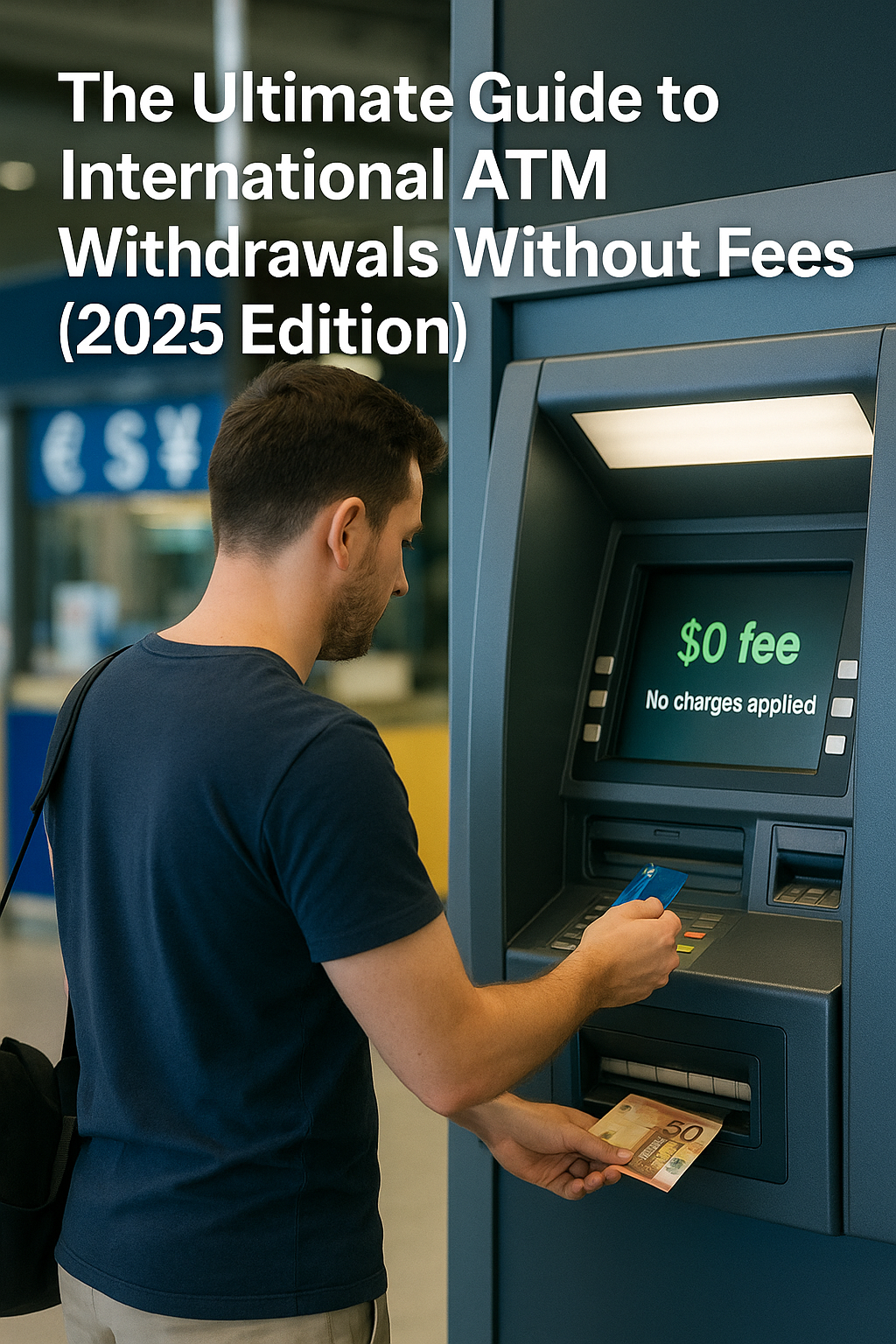How to Get Cash Anywhere in the World Without Paying a Dime
Why ATM Fees Abroad Are a Global Problem
For most international travelers, expats, digital nomads, and even remote workers, accessing cash overseas is an unavoidable part of daily life. While credit cards dominate many major cities, there are still countless destinations where cash remains king—especially in Southeast Asia, Eastern Europe, and parts of Latin America.
But here’s the real problem: ATM fees abroad can silently drain your bank account without you even noticing.
We’re not just talking about a $2 charge here or there. Depending on your bank, country, and ATM network, you could be losing $8–$15 per transaction, especially when layering:
- Local ATM usage fees
- Foreign bank markup
- Hidden conversion fees (DCC)
- And your home bank’s international transaction charges
In this definitive 2025 guide, we’ll break down how ATM fees actually work globally, and more importantly, how to eliminate them completely using proven financial tools, travel strategies, and insider knowledge. This isn’t some listicle of “Top 5 debit cards.” It’s a deep, actionable system that works in over 150 countries.
Section 1: Understanding the 3 Layers of ATM Charges
Before we dive into how to avoid fees, we need to understand how they’re structured. Every ATM withdrawal abroad typically involves three layers of potential charges:
1. Local ATM Fee (Host Bank)
When you insert your card into a foreign ATM, the machine owner may charge a direct fee. This is visible and usually disclosed on-screen. It’s the fee set by the local bank, not your card issuer.
Example:
Using a US card at a Bangkok Bank ATM in Thailand might display:
“This ATM will charge 220 THB (about $6.30 USD). Press yes to continue.”
2. Currency Conversion Trap (DCC – Dynamic Currency Conversion)
This is where most travelers unknowingly lose money. Many foreign ATMs will offer to convert your local currency withdrawal into your home currency, often saying something like:
“Withdraw 10,000 JPY = $89.23 USD (Exchange Rate: 1 USD = 112 JPY)”
Accept this conversion?
Don’t fall for it. This is a trick called DCC.
What looks like a convenience is actually a scam, with exchange rates 4–8% worse than your card network (Visa/MC) would provide.
Pro Tip: Always decline currency conversion and choose to be charged in the local currency.
3. Home Bank’s International Usage Fee
Your own bank may charge $3–$5 per foreign withdrawal, or 1–3% of the amount withdrawn. This applies regardless of what the foreign ATM charged. Unless your bank explicitly offers fee-free international withdrawals, this adds up quickly.
Section 2: The Best Fee-Free Debit Cards in 2025 (Globally Available)
Let’s move from problem to solution. If you want to completely avoid ATM fees, you need the right debit card that:
- Refunds third-party ATM fees, and
- Does not charge foreign transaction fees
Here are the globally best options (ranked by availability, reliability, and support):
1. Charles Schwab High Yield Investor Checking (U.S. Residents Only)
- ATM Fees Refunded: Yes, worldwide
- Foreign Transaction Fee: 0%
- Monthly Fee: $0
- Minimum Balance: None
- Bonus: Excellent customer service abroad
If you’re an American, this is the gold standard. Schwab automatically reimburses any ATM fees, even from private or airport ATMs. There are no hidden FX markups.
2. Wise Multi-Currency Debit Card (Available in 40+ countries)
- ATM Fees: Free up to ~$250/month, then ~1.75%
- FX Rate: Real mid-market rate
- Currencies Supported: 50+
- Bonus: Virtual cards + bank account details in 10 countries
Wise is not technically a “bank,” but it’s arguably the best financial tech for global nomads. Their real exchange rates and clear fees make them perfect for predictable withdrawals abroad.
3. Revolut (EU, UK, US, Australia, and more)
- ATM Withdrawal Limit: Free up to €200/$200, then 2%
- Card Fee: Free/basic, Premium for higher limits
- FX Rate: Excellent (no markup during weekdays)
- Bonus: Crypto & stock features for those interested
Revolut is a solid option for digital travelers, though you need to manage your free limit. Premium plans are worthwhile for frequent ATM users.
- Section 3: Global ATM Networks That Don’t Charge (Or Work With Refundable Cards)
- Section 4: Real-World Scenarios – Where & How to Withdraw Without Fees
- Section 5: Pro Traveler Tips – Airport ATMs, Bank Branches, and Local Hacks
- Conclusion: Building a 100% Fee-Free Cash Access System)



